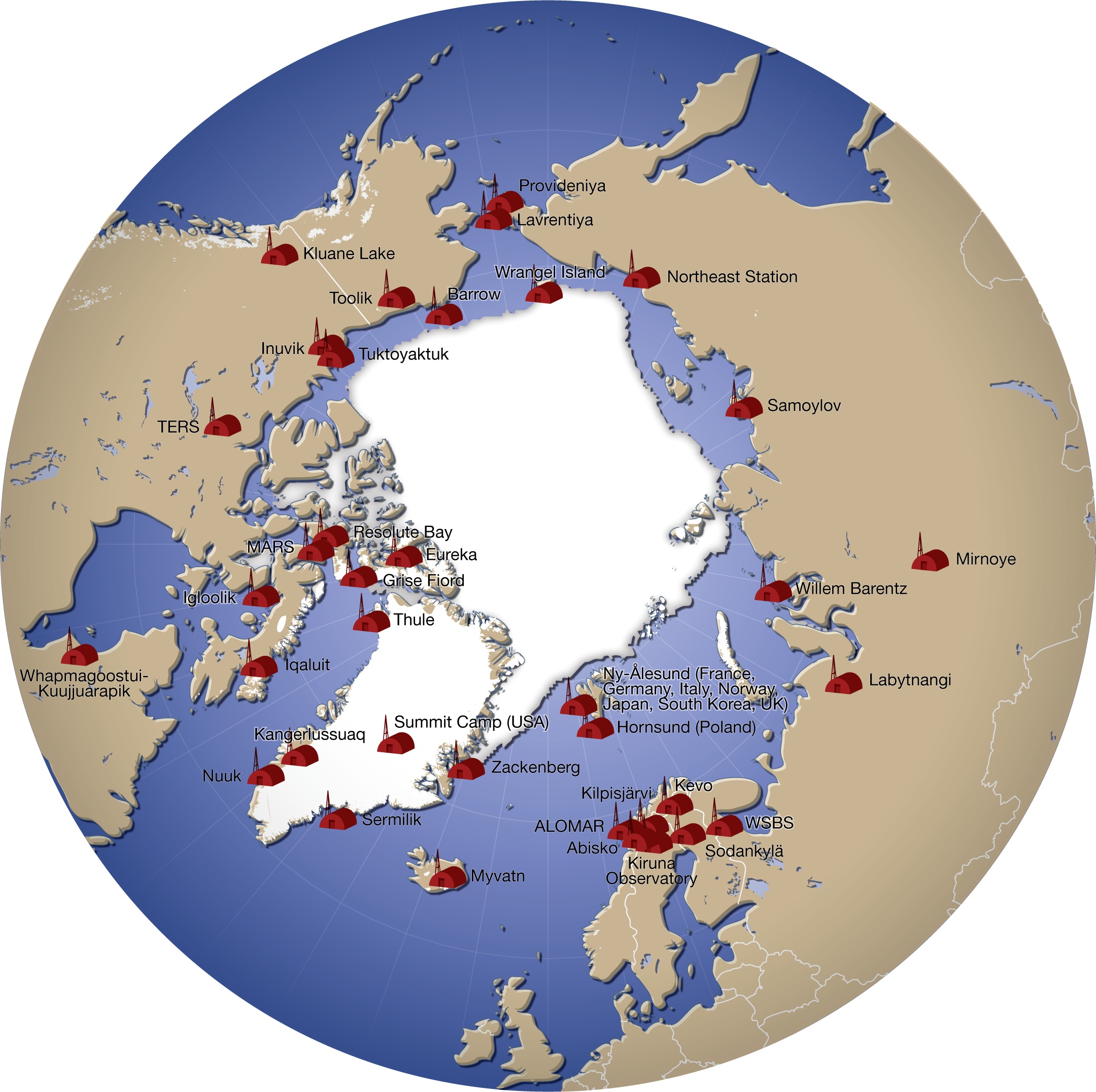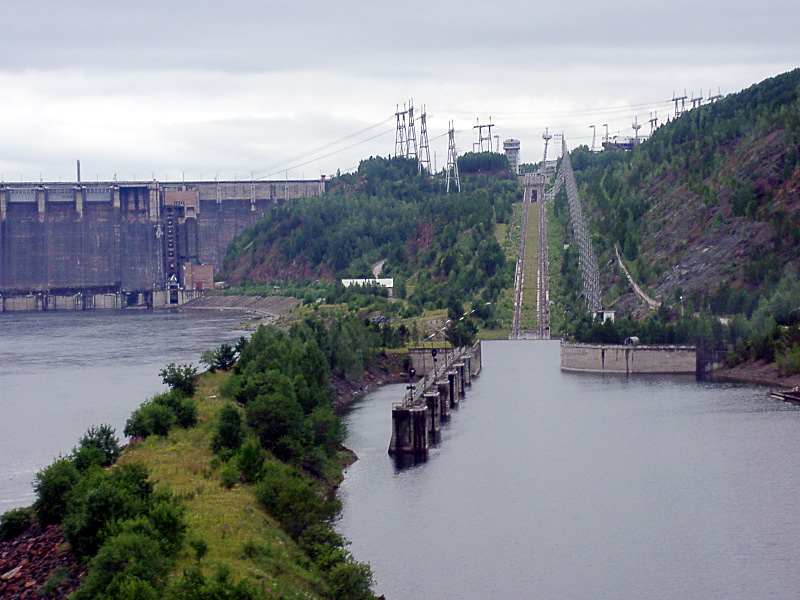|
Mirnoye (Turukhansky District)
Mirnoye (russian: Ми́рное) is a rural locality (a hamlet) in Turukhansky District in Krasnoyarsk Krai, Russia.Law #10-4765 This small human settlement is a part of Turukhansky Municipal District. Mirnoye is located approximately to the south of Bakhta village, located also on the right bank of the Yenisei River. This place, whose name means 'peaceful' in the Russian language, is mentioned in the literary works of Russian writer Mikhail Tarkovsky and in the novel ''The Woman Who Waited'' by Andreï Makine. Arctic research station The Yenisei Ecological Station, an Arctic research station, is located in the area of Mirnoye. See also *List of research stations in the Arctic A number of governments maintain permanent research stations in the Arctic. Also known as Arctic bases, polar stations or ice stations, these bases are widely distributed across the northern polar region of Earth. Historically few research sta ... References {{Authority control Rural local ... [...More Info...] [...Related Items...] OR: [Wikipedia] [Google] [Baidu] |
Krasnoyarsk Krai
Krasnoyarsk Krai ( rus, Красноя́рский край, r=Krasnoyarskiy kray, p=krəsnɐˈjarskʲɪj ˈkraj) is a federal subject of Russia (a krai), with its administrative center in the city of Krasnoyarsk, the third-largest city in Siberia (after Novosibirsk and Omsk). Comprising half of the Siberian Federal District, Krasnoyarsk Krai is the largest krai in the Russian Federation, the second largest federal subject (after neighboring Sakha) and the third largest subnational governing body by area in the world, after Sakha and the Australian state of Western Australia. The krai covers an area of , which is nearly one quarter the size of the entire country of Canada (the next-largest country in the world after Russia), constituting roughly 13% of the Russian Federation's total area and containing a population of 2,828,187 (more than a third of them in the city of Krasnoyarsk), or just under 2% of its population, per the 2010 Census. Geography The krai lies in ... [...More Info...] [...Related Items...] OR: [Wikipedia] [Google] [Baidu] |
Major Research Stations In The Arctic
Major (commandant in certain jurisdictions) is a military rank of commissioned officer status, with corresponding ranks existing in many military forces throughout the world. When used unhyphenated and in conjunction with no other indicators, major is one rank above captain, and one rank below lieutenant colonel. It is considered the most junior of the field officer ranks. Background Majors are typically assigned as specialised executive or operations officers for battalion-sized units of 300 to 1,200 soldiers while in some nations, like Germany, majors are often in command of a company. When used in hyphenated or combined fashion, the term can also imply seniority at other levels of rank, including ''general-major'' or ''major general'', denoting a low-level general officer, and ''sergeant major'', denoting the most senior non-commissioned officer (NCO) of a military unit. The term ''major'' can also be used with a hyphen to denote the leader of a military band such as ... [...More Info...] [...Related Items...] OR: [Wikipedia] [Google] [Baidu] |
Research Station
Research stations are facilities where scientific investigation, Data collection, collection, analysis and experimentation occurs. A research station is a facility that is built for the purpose of conducting scientific research. There are also many types of research stations including: biological field stations, space stations etc. Research station sites might include remote areas of the world, oceans, as well as outer space, such as the International Space Station. Biological research stations developed during a time of European colonization and imperialism where Natural history, naturalists were employed to conduct observations on fauna and flora. Today, the discipline is represented by a number of organizations which span across multiple continents. Some examples include: the Organization of Biological Field Stations and the Organization for Tropical Studies. Space stations were also developed over a number of decades through Scientific method, scientific analysis and writing, w ... [...More Info...] [...Related Items...] OR: [Wikipedia] [Google] [Baidu] |
Arctic
The Arctic ( or ) is a polar region located at the northernmost part of Earth. The Arctic consists of the Arctic Ocean, adjacent seas, and parts of Canada ( Yukon, Northwest Territories, Nunavut), Danish Realm ( Greenland), Finland, Iceland, Norway, Russia ( Murmansk, Siberia, Nenets Okrug, Novaya Zemlya), Sweden and the United States ( Alaska). Land within the Arctic region has seasonally varying snow and ice cover, with predominantly treeless permafrost (permanently frozen underground ice) containing tundra. Arctic seas contain seasonal sea ice in many places. The Arctic region is a unique area among Earth's ecosystems. The cultures in the region and the Arctic indigenous peoples have adapted to its cold and extreme conditions. Life in the Arctic includes zooplankton and phytoplankton, fish and marine mammals, birds, land animals, plants and human societies. Arctic land is bordered by the subarctic. Definition and etymology The word Arctic comes from the Greek w ... [...More Info...] [...Related Items...] OR: [Wikipedia] [Google] [Baidu] |
Yenisei Ecological Station
The Yenisey (russian: Енисе́й, ''Yeniséy''; mn, Горлог мөрөн, ''Gorlog mörön''; Buryat: Горлог мүрэн, ''Gorlog müren''; Tuvan: Улуг-Хем, ''Uluğ-Hem''; Khakas: Ким суғ, ''Kim suğ''; Ket: Ӄук, ''Quk''; Nenets: Ензя-ям’, ''Enzja-jam''), also romanised as Yenisei, Enisei, or Jenisej, is the fifth-longest river system in the world, and the largest to drain into the Arctic Ocean. Rising in Mungaragiyn-gol in Mongolia, it follows a northerly course before draining into the Yenisey Gulf in the Kara Sea. The Yenisey divides the Western Siberian Plain in the west from the Central Siberian Plateau to the east; it drains a large part of central Siberia. It is the central one of three large Siberian rivers that flow into the Arctic Ocean (the other two being the Ob and the Lena). The maximum depth of the Yenisey is and the average depth is . The depth of river outflow is and inflow is . Geography The Yenisey proper, from ... [...More Info...] [...Related Items...] OR: [Wikipedia] [Google] [Baidu] |
Andreï Makine
Andreï Sergueïevitch Makine (russian: Андрей Серге́евич Макин; born 10 September 1957) is a French novelist. He also publishes under the pseudonym Gabriel Osmonde."Who is Gabriel Osmonde? A French Literary Mystery is Solved" New York Times, April 1, 2011 Makine's novels include '' Dreams of My Russian Summers'' (1995) which won two top French awards, the and the |
The Woman Who Waited
''The Woman Who Waited'' () is a 2004 novel by the French writer Andreï Makine. It is set in the 1970s and tells the story of a 26-year-old man who falls in love with a woman who still is faithful to her fiancé who went missing in World War II. Reception Elena Seymenliyska of ''The Guardian'' called the novel "achingly beautiful" and described it as "rich in symbolism and swathed in enigmatic lyricism". ''The New York Times Andrey Slivka called it "an entertaining story about love, the onset of maturity, the moral complications of cultural dissidence and Soviet life as it was lived in a northern corner of the empire", and wrote that it "manages to treat its themes in a beautifully readable manner". ''Publishers Weekly ''Publishers Weekly'' (''PW'') is an American weekly trade news magazine targeted at publishers, librarians, booksellers, and literary agents. Published continuously since 1872, it has carried the tagline, "The International News Magazine of ...'' wrote that ... [...More Info...] [...Related Items...] OR: [Wikipedia] [Google] [Baidu] |
Russian Language
Russian (russian: русский язык, russkij jazyk, link=no, ) is an East Slavic language mainly spoken in Russia. It is the native language of the Russians, and belongs to the Indo-European language family. It is one of four living East Slavic languages, and is also a part of the larger Balto-Slavic languages. Besides Russia itself, Russian is an official language in Belarus, Kazakhstan, and Kyrgyzstan, and is used widely as a lingua franca throughout Ukraine, the Caucasus, Central Asia, and to some extent in the Baltic states. It was the ''de facto'' language of the former Soviet Union, Constitution and Fundamental Law of the Union of Soviet Socialist Republics, 1977: Section II, Chapter 6, Article 36 and continues to be used in public life with varying proficiency in all of the post-Soviet states. Russian has over 258 million total speakers worldwide. It is the most spoken Slavic language, and the most spoken native language in Europe, as well as the ... [...More Info...] [...Related Items...] OR: [Wikipedia] [Google] [Baidu] |
Turukhansky District
Turukhansky District (russian: Туруха́нский райо́н) is an administrativeLaw #10-4765 and municipalLaw #13-2925 district (raion), one of the forty-three in Krasnoyarsk Krai, Russia. It is located in the west of the krai and borders with Taymyrsky Dolgano-Nenetsky District in the north, Evenkiysky District in the east, Yeniseysky District in the south, and with Tyumen Oblast in the west. The area of the district is .Official website of Krasnoyarsk KraiInformation about Turukhansky District Its administrative center is the rural locality (a '' selo'') of Turukhansk. Population: 12,439 ( 2002 Census); The population of Turukhansk accounts for 24.9% of the district's total population. Geography The following tributaries of the Yenisey flow through the district: the Podkamennaya Tunguska River, the Bakhta River, the Yeloguy River, the Nizhnyaya Tunguska River, the Turukhan River, and the Kureyka River. History The district was founded on June 7, 1928. T ... [...More Info...] [...Related Items...] OR: [Wikipedia] [Google] [Baidu] |
Yenisei River
The Yenisey (russian: Енисе́й, ''Yeniséy''; mn, Горлог мөрөн, ''Gorlog mörön''; Buryat: Горлог мүрэн, ''Gorlog müren''; Tuvan: Улуг-Хем, ''Uluğ-Hem''; Khakas: Ким суғ, ''Kim suğ''; Ket: Ӄук, ''Quk''; Nenets: Ензя-ям’, ''Enzja-jam''), also romanised as Yenisei, Enisei, or Jenisej, is the fifth-longest river system in the world, and the largest to drain into the Arctic Ocean. Rising in Mungaragiyn-gol in Mongolia, it follows a northerly course before draining into the Yenisey Gulf in the Kara Sea. The Yenisey divides the Western Siberian Plain in the west from the Central Siberian Plateau to the east; it drains a large part of central Siberia. It is the central one of three large Siberian rivers that flow into the Arctic Ocean (the other two being the Ob and the Lena). The maximum depth of the Yenisey is and the average depth is . The depth of river outflow is and inflow is . Geography The Yenisey proper, f ... [...More Info...] [...Related Items...] OR: [Wikipedia] [Google] [Baidu] |
Bakhta (Turukhansky District)
Bakhta (russian: Бахта) is a rural locality (a village) in Turukhansky District, Krasnoyarsk Krai, Russia.Law #10-4765 It is part of Turukhansky Municipal District. The village is located in the right bank of the Yenisei, by its confluence with the Bakhta River. There is a pier for boats reaching the village. Bakhta houses the Museum of Taiga Traditions. Mirnoye hamlet is located approximately to the south of Bakhta, also on the same bank of the Yenisei. in the movie of 2010 '' Happy People: A Year in the Taiga'' by Werner Herzog focuses on the life of the people in the village of Bakhta. Protected area The Central Siberia Nature Reserve, a protected area of the East Siberian taiga ecoregion, is located in the limits of Bakhta. See also *Tunguska Plateau The Tunguska Plateau ( rus, Тунгусское плато) is a mountain plateau in Krasnoyarsk Krai, Siberia, Russia. It is a part of the Central Siberian Plateau. The plateau is located in largely uninhabited a ... [...More Info...] [...Related Items...] OR: [Wikipedia] [Google] [Baidu] |





